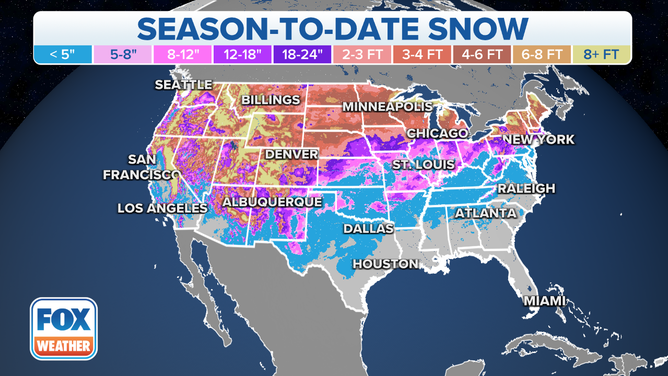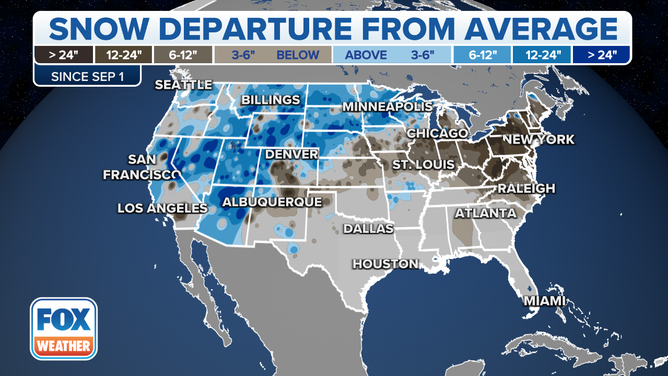Have and have-nots: See how much snow fell and where this winter
For some, winter proved to be less than imaginable and provided a stark contrast between who has received snow and who hasn't.
Can you smell snow?
If you live in a part of the country where it snows, you’ve likely said or heard someone say, "it smells like it is going to snow." But can you actually smell snow? Well, yes and no.
It's out with the old and in with the new season on March 1 with the beginning of meteorological spring.
For some, winter proved less than ideal and provided a stark contrast between who has received snow and who hasn't.
Data from the National Weather Service's Weather Prediction Center offered a peak at winter's snowfall statistics.
The first graphic shows the snowfall this season from Oct. 1, 2022, through Feb. 28, 2023, across the contiguous U.S.
WHY SPRING SHOULD ACTUALLY BEGIN ON MARCH 1

The NWS Weather Prediction Center shows the snowfall this season across the contiguous U.S.
(FOX Weather)
The second map illustrates the seasonal snowfall departure from the 14-season mean (2008-2009 to 2021-2022) through the end of February.
According to FOX Weather senior weather data specialist Shane Brown, the largest season-to-date departure from previous seasonal maximum happened along the Ashley National Forecast in Utah with a difference of almost 22 feet.
DOES MARCH REALLY COME IN LIKE A LION AND GO OUT LIKE A LAMB?

Here's a look at the seasonal snowfall departure from the 14-season mean through the end of February.
(FOX Weather)
The WPS noted the West and the northern Plains are experiencing much above average snow. This comes while the East has been nearly shut out, with significantly less snow than normal.
The last map below shows how much more snow has fallen so far this season when compared to the prior 14 seasons' maximum snowfall through the end of February.
MARCH'S TEMPERATURE OUTLOOK: SWIMSUITS OR MITTENS FOR THE START OF METEOROLOGICAL SPRING?

Data shows how much more snow has fallen so far this season when compared to prior maximum snowfall through the end of February.
(FOX Weather)
"Notice how expansive the maximum snowfall departures (2 to 4 feet!) are across the West when compared to any of the past 14 seasons," the WPS said.
So hold on. Snow may not be done for much of the nation quite yet as much of the country is expecting cooler than average conditions for March.
